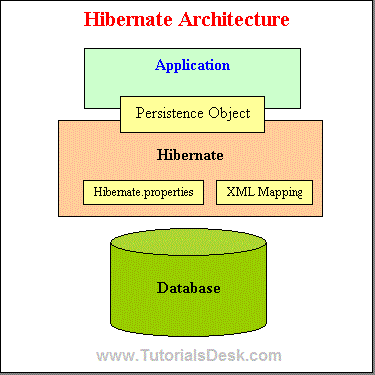Hibernate is an object relation mapping ORM tool designed for java programming. It is the best framework for mapping java object-oriented model to the relational database. Hibernate was introduced to replace the EJB2 style entity bean in java. To understand deep inside the Hibernate, the knowledge of basic java programming is necessary. You can access resources like Java Certification, blogs, videos, coding platforms etc., and explore the base of Java programming. Here, you will cover data types, cloning, interfaces, serialization and many more modules driving the Java development journey.
Now, let’s understand how Hibernate is getting so much attention after its first introduction in the year 2001:
Hibernate framework Benefits:
- Hibernate is kept open source registered under the LGPL license.
- It is considered lightweight with fast performance. Hibernate uses two caches inside its framework termed first level and second level cache. The first level cache starts by default.
- The best part about Hibernate is it is database independent. The Hibernate Query Language (HQL) is the object-oriented type of SQL. It doesn’t require database specific queries. In the traditional development, it requires to rewrite the whole SQL query while changing database for the code. It sometimes raises maintenance issues. And, now you don’t even have to write code for creating a table manually in the database. You can automatically create one. Here, you can quickly access the various table at a time making the whole process easier. The inbuilt query cache provides the complete statistics of queries and database status.
Now, it has become easier to develop a Java application and make it interact with the database. The best part is its open source and lightweight ORM tool powered with the specifications of Java Persistence APIs (JPA) to achieve data persistence. Before going further in the Hibernate architecture, let’s understand ORM tool.
What is an ORM tool?
An ORM tool is used for creating data and manipulating it. It is done by mapping an object to the data kept in the database. An ORM tool leverages the Java DataBase Connectivity API to establish communication with the database.
Now, you have a clear picture of the Hibernate framework designed to serve a better environment for creating Java applications. Its back is handled with the Java Persistence API. JPA is a Java specification standard designed for providing functionalities to the ORM tools. Java provides javax.persistence package for integrating JPA. It contains various classes and interfaces for Java.
Architecture:
Fig: Hibernate Architecture
The Hibernate framework is comprised of various objects as shown above in the diagram. It includes a session factory, transactions, connection factory,transaction factory etc.
The whole architecture is divided into four layers:
- Application
- Framework
- Backend Application Programming Interface
- Database
Configuration:
Configuration class is available in org.hibernate.cfg package to start Hibernate. It is used for reading both the mapping and config file. It ensures whether all the syntax in the config file is correct or not throwing an exception in such cases. If the config file is correct, it makes a meta-data in storage returning it to object of the config file.
SessionFactory:
The SessionFactory interface is available in org.hibernate package. It has the second level cache and used to create the Session object. SessionFactory is immutable.
Session:
Session interface is available in org.hibernate package. It is used for establishing a connection with the database application. This non-thread-safe object performs CRUD operations.
Transaction:
A Transaction object is used for multiple operations requiring any change in the database. It provides instructions for changes leveraging commit() method.
Query:
The Query interface is accessible from the org.hibernate package. Session.createQuery() method is used for accessing its instance. A Query interface provides setMaxResults and setFirstResult() to use a result set available over a page.
Criteria:
Criteria API is used to retrieve entities. It uses Criterion objects for accessing them. TO obtain Criteria instance you need factory methods over Restrictions.
Overall Working:
The first step in Hibernate allows you to define persistence logic for accessing database to make changes. It uses config and mapping files. Now, we need to create the object of a class for writing logic.
The second step involves communication between the created class and Hibernate framework.
The role of the Java class is done here. From now, Hibernate will be responsible for executing persistence logic with all its included layers.
Now, in the third stage Hibernate will use JDBC, JNDI, and JTA like APIs to interact with the database.
Now, after establishing a connection to perform CRUD operation. Once it is retrieved, the objects will be displayed over the console.
Author:
Danish Wadhwa is a HubSpot certified marketing expert and IT pro. With a handful of experience in the web, he has served a number of clients across the world. As a techno-savvy person, he believes in experimenting with new tools and techniques.






